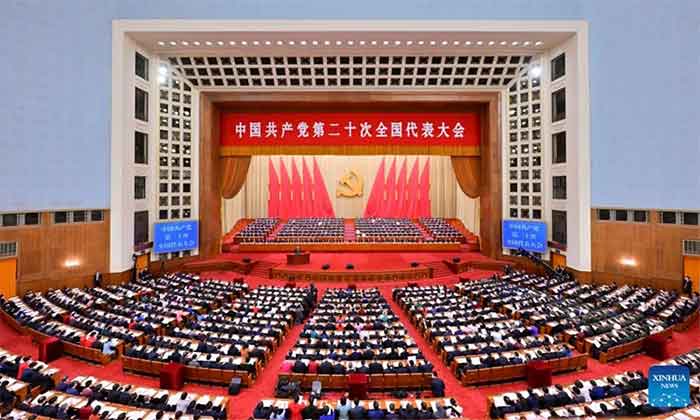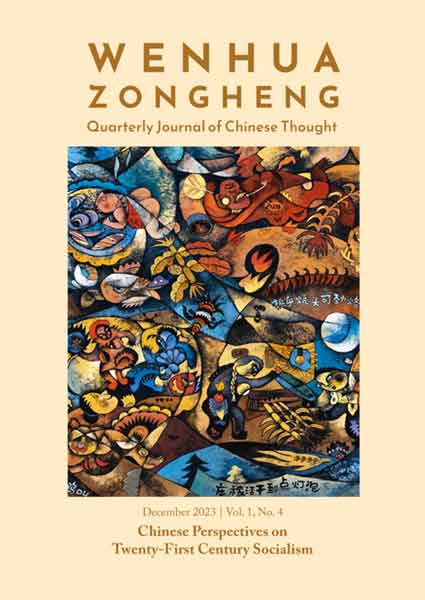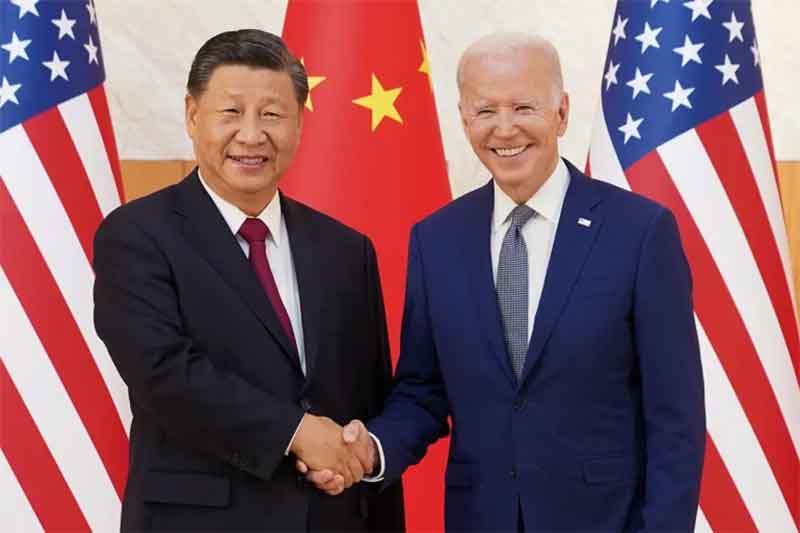Agendas, exaggerations, and misrepresentations guide media reports of the Peoples Republic of China (PRC). Illogical descriptions and unverified information are apparent in many reports. Not being logical and not validating information is troublesome and the reason is obvious ─ validating information and being logical yields a truthful perspective and that perspective is damaging to those who shape specious opinions of China. Agendas, contradicted by logic, frame reports on China.
China’s Repression of Hong Kong’s Pro-Democracy Movement
Before and during the 2019 Hong Kong (HK) protests, the media exaggerated incidents to insinuate Hong Kong residents lived in an environment of severely suppressed freedoms. Facts refute the accusation.
The lack of an extradition agreement, which prevented an HK resident, accused of murdering his girlfriend during a vacation in Taiwan, to be deported to Taiwan disturbed Beijing. The PRC promptly passed a bill that allowed criminal suspects in Hong Kong to be sent to Taiwan and mainland China. Initial protests erupted from fear that the Beijing bill would undermine Hong Kong’s judicial independence and endanger dissidents. Beijing responded by specifically exempting political dissidents from the bill. That did not satisfy the protestors. They continued to demonstrate and forced Beijing to withdraw the bill, which should have ended the protests.
Spurred by the organizing activity and ability to demonstrate, the demonstrators took a new turn — a demand for complete democracy and an inquiry into police actions. A previously compliant Beijing smelled trouble and reacted harshly. Deliberate obfuscation of the events leading to the protests and one-sided opinions of the events characterized reports of the demonstrations.
Freedom House, Democratic Crisis in Hong Kong: Recommendations for Policymakers
Though protesters have remained largely peaceful, Hong Kong’s police force has responded with increasing violence—attacking journalists, firing tear gas and rubber bullets at protesters at dangerously close range, beating some with batons and shields, and reportedly roughing up those inside train stations waiting to return home.
Peaceful demonstrations?
CNBC, ‘Wanton destruction’ and economic costs on Hong Kong may make people less sympathetic to protests, updated Mon, Sep 2, 2019, by Grace Shao
On Sunday, thousands of demonstrators blocked roads and public transportation routes to the Hong Kong International Airport, saying they hope to draw the world’s attention to their pro-democracy movement…Violent demonstrators were seen tearing down CCTV cameras, throwing tear canisters back at the police and flipping metal fences onto the rail tracks, leaving many arrival passengers stranded in the airport for hours. The Hong Kong police responded to the protester’s behavior with water cannons, tear gas, and some violence.
During one year of protests, police action did not result in the killing of any protestor. Compare that record to the 1965 Watts riots where TIME Magazine, She Played a Key Role in the Police Response to the Watts Riots, by Morgan Jerkins, August 3, 2020, claims, “The chaos that ensued left 34 people dead, including 23 killed by Los Angeles Police Department (LAPD) officers or National Guard troops.” Only two people died during the Hong Kong protests, one protestor accidentally fell off a roof and one elderly man, who was against the protests, was killed by protestors.
Financial Times, Pro-democracy protesters wreak havoc in Hong Kong, Leo Lewis in Hong Kong SEPTEMBER 15 2019
Hardcore pro-democracy protesters left a trail of havoc and destruction across Hong Kong on Sunday, marching in defiance of a police ban and targeting government buildings and subway stations with vandalism. The day’s violence, which began with masked demonstrators hurling petrol bombs and smashing windows at Admiralty and Wan Chai stations marked the 15th straight weekend that protests have gripped the city and raised questions over how the Asian financial hub’s future will be shaped.
One answer to “how the Asian financial hub’s future will be shaped” is that it will lose its eminent status on CATO’s Human Freedom Index and Heritage Foundation’s Economic Freedom Index. Hiding behind the headlines is that before the 2019 demonstrations began, Hong Kong was rated number three of all nations in Libertarian CATO Foundation’s Human Freedom Index and number one in conservative Heritage Foundation’s Economic Freedom Index.
CATO’s rating is shown below.

Before the 2019 demonstrations, for more than 15 years, the conservative Heritage Foundation rated Hong Kong as the most economic free area in the world.
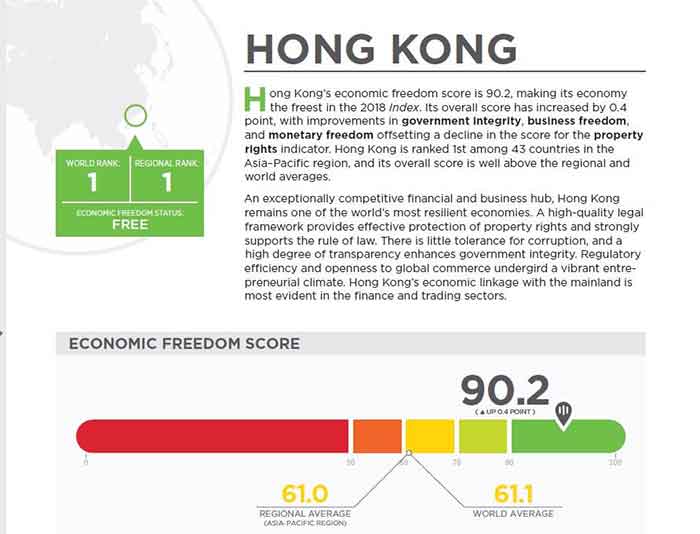
The “pro-democracy” activists wanted to make Hong Kong more free than free; they succeeded in having Hong Kong’s freedoms severely diminished.
China and the Debt Trap
According to many sources, benevolent Western institutions lend to cash-strapped nations in order to improve their quality of life and China lends to the same nations as a “debt trap,” as an enticement to overextend the country’s ability to repay and gain political leverage. The illogic of this assumption is readily apparent — it insultingly assumes that third-world nations cannot read the fine print, are sufficiently stupid to fall into the trap, that the PRC is willing to forfeit time, labor, and its money to acquire political leverage in another country, and desires to acquire the reputation of a predatory nation.
U.S. government officials have been the most vociferous in alerting the world to China’s supposed “debt trap diplomacy.” U.S. Sens. Ted Cruz (R-Texas), David Perdue (R-Ga.), and 14 senators sent a letter to the U.S. State and Treasury Departments, which expressed their concerns.
Domestic economic constraints in China stemming from COVID-19 will likely make China less willing to roll over debts as they mature, which could exacerbate emerging-market liquidity challenges, as projects struggle in areas of strategic interest, China will be tempted to safeguard its investments and political influence. Short of this, the U.S. and other Western taxpayers would be in essence bailing out Chinese financial institutions and enabling China’s debt-trap diplomacy.
The “debt trap” verbiage, applied to Chinese lending, came to life during Sri Lanka’s first debt crisis and has stuck around as an effective means to vilify the PRC. A typical report on Si Lanka’s economic problems.
Washington Post (WAPO), This China has a hand in Sri Lanka’s economic calamity, analysis by Ishaan Tharoor, July 20, 2022
One of the major players in Sri Lanka’s calamity is China. Beijing is Sri Lanka’s lone biggest creditor, accounting for some 10 percent of the country’s foreign debt. Between 2000 and 2020, it extended close to $12 billion in loans to the Sri Lankan government, largely for a slate of major infrastructure projects that turned into white elephants — including a costly port facility in the Rajapaksas’ hometown of Hambantota, which was effectively ceded to Chinese control half a decade ago after Sri Lankan authorities recognized they could no longer pay off the loans.
Examination of the Sri Lanka debt crisis exposes the mendacity and viciousness of the WAPO report. Almost every sentence is spurious; China does not engage in “debt trap diplomacy” and has been one lender who made financial sacrifices that rescued nations from debilitating borrowing.
The Atlantic, The Chinese ‘Debt Trap’ Is a Myth. by Deborah Brautigam and Meg Rithmire, February 6, 2021, had already contradicted WAPO.
Steep payments on international sovereign bonds, which comprised nearly 40 percent of the country’s external debt, put Sirisena’s government in dire fiscal straits almost immediately. When Sirisena took office, Sri Lanka owed more to Japan, the World Bank, and the Asian Development Bank than to China. Of the $4.5 billion in debt service Sri Lanka would pay in 2017, only 5 percent was because of Hambantota. The Central Bank governors under both Rajapaksa and Sirisena do not agree on much, but they both told us that Hambantota, and Chinese finance in general, was not the source of the country’s financial distress.
There was also never a default. Colombo arranged a bailout from the International Monetary Fund and decided to raise much-needed dollars by leasing out the underperforming Hambantota Port to an experienced company—just as the Canadians had recommended. There was not an open tender, and the only two bids came from China Merchants and China Harbor; Sri Lanka chose China Merchants, making it the majority shareholder with a 99-year lease, and used the $1.12 billion cash infusion to bolster its foreign reserves, not to pay off China Eximbank.
According to Chatham House, as of April 2023, Africa’s private and public external debt is about $700 billion and Chinese lenders account for 12 percent of that total. The major creditors to all African nations are private financial firms and international agencies. Why and how could China, which controls a minor part of Africa’s debt arrange a “debt trap?”
China was Late in Alerting the World of the Coronavirus
News reports contradict the assertion that China delayed and mishandled information on the spread of the coronavirus.
China learns of the outbreak.
Journal of Chinese Medical Association
In late December 2019, an outbreak of a mysterious pneumonia characterized by fever, dry cough, and fatigue, and occasional gastrointestinal symptoms happened in a seafood wholesale wet market. The market was shut down on January 1, 2020, after the announcement of an epidemiologic alert by the local health authority on December 31, 2019.
Chinese Central Authority immediately informed the world as soon as of the possible epidemic.
World Health Organization
On 31 December 2019, the WHO China Country Office was informed of cases of pneumonia of unknown etiology (unknown cause) detected in Wuhan City, Hubei Province of China.
China kept the world informed of cases.
Contagion Live News
The US Centers for Disease Control and Prevention (CDC) also issued a statement on the matter, writing that as of January 5, 2020, national authorities in China had reported 59 cases. No deaths have been reported at this time.
China quickly identified the genetic sequence and shared data with other nations.
World Health Organization (WHO))
The Chinese authorities identified a new type of coronavirus, which was isolated on January 2020. On 12 January 2020, China shared the genetic sequence of the novel coronavirus for countries to use in developing specific diagnostic kits.
U.S. authorities were aware of cases on its mainland in the third week of January 2020.
Centers for Disease Control and Prevention
The United States has its first confirmed case of a new virus that appeared in Wuhan, China, last month, the US Centers for Disease Control and Prevention announced Tuesday… He arrived at Seattle-Tacoma International Airport on January 15, before any health screenings for the Wuhan coronavirus began at US airports
China confirmed person-to-person transmission.
XINHUANET.com, Jan 21
A high-level expert team of China’s National Health Commission has confirmed people-to-people transmission of the 2019-nCoV and infections among medical staff.
World Health Organization called COVID-19 a pandemic on March 11, 2020
Acta Biomed. 2020; 91(1): 157–160. Published online 2020, Mar 19.
The World Health Organization (WHO) on March 11, 2020, declared the novel coronavirus (COVID-19) outbreak a global pandemic.
U.S. President, Donald Trump, minimized the epidemic.
Scientific American
During the pandemic’s crucial early days and weeks, then President Donald Trump and other authority figures actively minimized the virus’s threat. Trump dismissed it as no worse than the flu and said the pandemic would be over by Easter.
The latter two narratives explain how and why criticism of China’s handling of information concerning the Covid-19 epidemic arose. Because WHO was late in sounding the alarm of an epidemic and former U.S. President Trump carelessly mishandled the response to the epidemic, both had to find a scapegoat to deter them from criticism.
China Commits Genocide of the Uyghurs
Reliable facts concerning China’s oppression of its Uyghur minority are difficult to obtain. Only the Chinese authorities have all the facts and presenting their narrative is suspect. Those accusing China of repression, human rights violation, and going all the way to genocide are also suspect; where have they obtained proven facts?
For a variety of reasons, the Chinese government’s version of events in Xinjiang is more convincing:
(1) Most nations that have large minorities tend to exclude and repress minorities who refuse or cannot integrate and strive to maintain their own national identities — Kurds in several countries, Christians in many Muslim countries, Mayan in Mexico, Chin in Myanmar, Tartars in Crimea, and tens of others. Whereas most nations ignore and marginalize their ethnic minorities, which isolates the minority people from the system and reduces their opportunities, the PRC has taken an active interest in all of their minorities, pushing them to learn the language, giving scholarships for higher education, bringing industry, transportation, infrastructure, housing, health, and education services to their regions, raising their standard of living, forcing them to abide by government laws, and prodding them to feel Chinese.
These positive endeavors demonstrate an honest effort by China to integrate the Uyghurs into the nation, and not harshly; the Uyghurs can maintain customs and religions that do not interfere with national legislation.
(2) Israel, Pakistan, India, Bahrain, and many other countries considered “American friends,” have been accused of severe repression of elements of their native populations and their militaries have caused deaths and injuries to these populations. Because the more repressive nations are not pursued to correct their practices, why the concern with China, whose repression is magnitudes less than the others?
(3) Known facts tend to favor the China narrative.
Instead of reciting credible and substantiated facts, Chin’s antagonists harm their narrative with dubious charges:
- China is committing genocide.
Maybe a case can be made for human rights abuses or some persecution, but no physical or cultural genocide has been shown. Accusing a nation of the serious charge of genocide demands verified documentation. - China forcibly interred more than a million Uyghurs in re-education camps.
Whether the camps are truly educational or perniciously internment, they have successfully halted the terrorism that gipped Xinjiang for many years. Nobody seems to have been physically injured from the internment and nothing has been said about them for a long time, which means they accomplished their tasks. - China has forced Uyghurs into slave labor camps.
The attempt to relate Nazi Germany’s ‘Work Makes Free slogan to China’s recruitment of Uyghurs into industrial plants is pathetic. The factories are privately owned, some being suppliers to American firms, such as Nike. China, which has a workforce of hundreds of millions doesn’t need a few thousand extra workers from Xinjiang to work at low wages to augment their economy. Wages are set by the employers and, as in all of these types of labor contracts, the worker is committed to staying on-site for a defined period. Republicans in the U.S. rail against excessive welfare, especially for those who can work and should work. The Chinese are doing what the Republicans want, so what’s the problem? - China forced Uyghurs into population control.
This charge arises from information that in 2017 and 2018, birth rates in Xinjiang dropped by a third, from 15.8 per 1,000 people to 10.7 per 1,000 people. This is true but it follows a previously excessive birth rate in Xinjiang and what happened to all Chinese families in past generations.
CNN, China needs to boost its population so why not scrap birth caps entirely? The reason might be Xinjiang, Analysis by Ben Westcott, Updated Tue June 1, 2021
Between 1991 and 2017, Xinjiang had a substantially higher birth-rate ratio when compared to the rest of the country, according to a report by the Australian Strategic Policy Institute. Researchers say for decades Xinjiang’s Uyghur families traditionally had many children – sometimes as many as nine or 10.
During the one-child policy, ethnic minorities, including Xinjiang’s Uyghur population, were allowed to have up to three children, which authorities said was in deference to the group’s cultural traditions of large families. But when the Chinese government began its crackdown in Xinjiang in 2017, which allegedly involved sending millions of Uyghurs to a vast complex of detention centers, there was a simultaneous tightening of family planning policies.
(4) First-person accounts are still suspect.
China’s accusers mostly rely on first-person accounts from exiled Uyghurs. Many may have legitimate stories and others may be exaggerating, all are suspect for one reason – Millions of Americans claimed the 2020 presidential election was stolen, and many recited first-hand accounts of observing the theft. All accounts were nonsense.
Conclusion
It may take a village to raise a child but it takes a library to scrutinize the prominent instances of China bashing and reply to each of them. Analysis of a few vital stories concerning China has shown that almost everything written about China needs to be carefully scrutinized.
The most extreme China bashers, and there are plenty of them, twist everything to present China as the epitome of evil, placing China in a no-win situation, criticized even when the PRC helps the world. Take this verification of “no good deed goes unpunished.”
Los Angeles Times, Don’t Be Fooled by China’s Mask Diplomacy, by Jeffrey W. Hornung, May 5, 2020
We’ve seen something like this before. Straight from its well-versed playbook, China has gone on a “charm offensive” to try to make the world forget Beijing’s culpability in the coronavirus crisis. This time, the charm offensive comes in the form of masks and ventilators.
To divert the world’s attention, China has provided coronavirus-related aid to hundreds of countries that include tens of millions of masks, millions of testing kits, and ventilators, including 1,000 for New York. This makes for good news but belies China’s actions against neighbors struggling with the pandemic. In the few short months since COVID-19 began spreading beyond China’s borders, China has continued—and in some cases escalated—provocations against its neighbors, both in the air and maritime domains, to challenge sovereignty claims as these states struggle with the weight of the pandemic.
U.S. aid is not characterized as part of a “charm offensive.” If it isn’t, why does the U.S. label every shipment in large print, “US AID?”
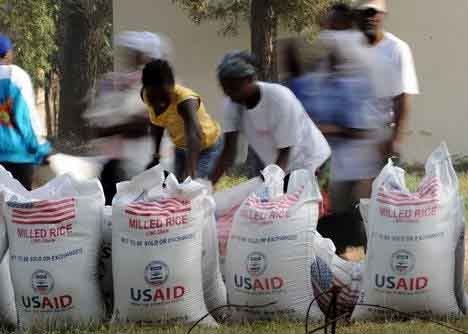
China is not a perfect nation and has its faults. Exaggerating every misstep to suit an agenda is counterproductive and steers thoughts and policies in unacceptable directions China is helping the construction of a more prosperous world and is opposed by the same government that cast aside and persecuted the Chinese that helped build America’s railroads. Where will it end?
Dan Lieberman publishes commentaries on foreign policy, economics, and politics at https://dlieb10gmailcom.substack.com/. He is author of the non-fiction books A Third Party Can Succeed in America, Not until They Were Gone, Think Tanks of DC, The Artistry of a Dog, and a novel: The Victory (under a pen name)



